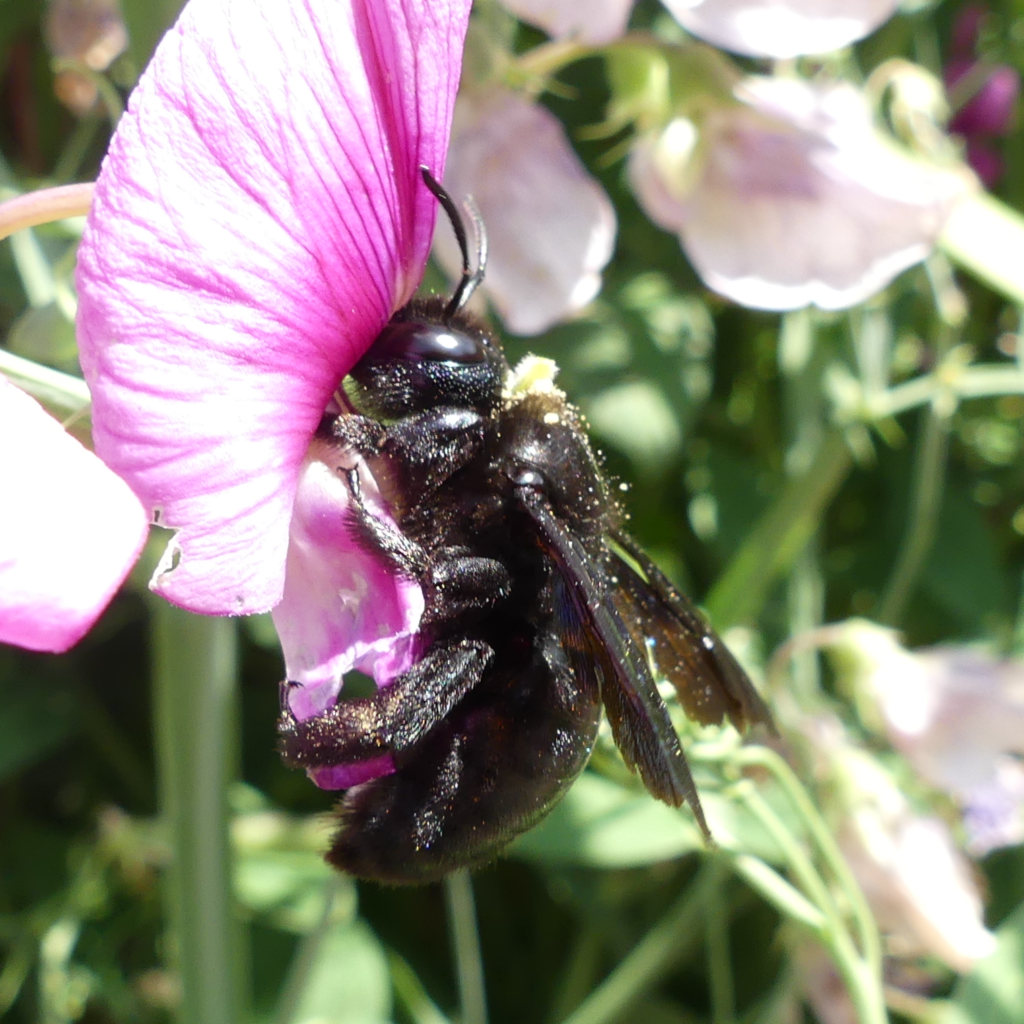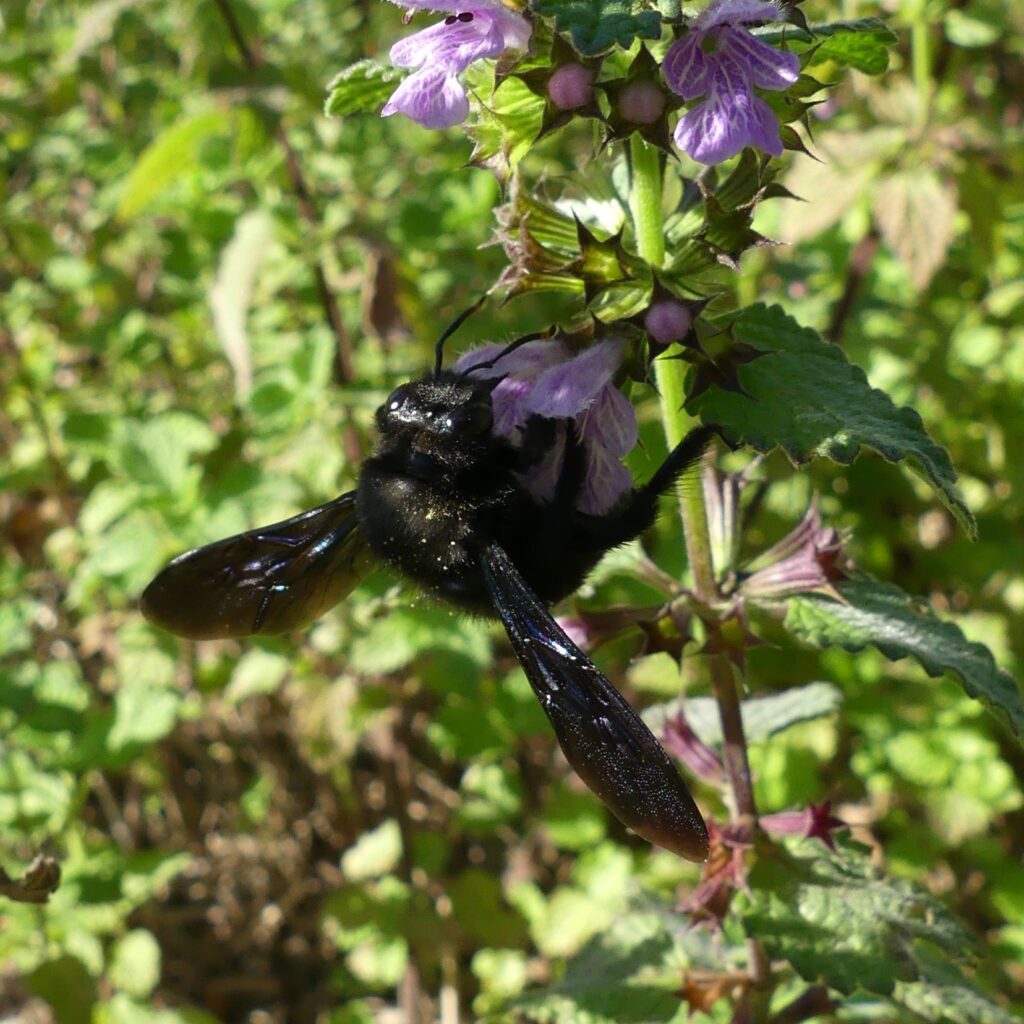Die Holzbiene Xylocopa violacea ist seit dem 19. Jhd. als Nektarräuber bekannt (Bertkau, 1884). Das heißt, sie betritt eine Blüte oft nicht auf normalem Wege, wie auf dem Foto, sondern sticht ein Loch in die Blütenblätter, um so an den Nektar zu kommen. Das passiert bei Blüten mit verborgenem Nektar, wie z.B. dem Gewöhnlichen Seifenkraut. Hier wird der Nektar am Grunde der ca. 2 cm langen Kronröhre abgegeben. Unsere größte Bienenart nistet in selbstgenagten Nestern im Totholz (Malyshev, 1931). Häufig auch im Siedlungsbereich, was manchmal zu Problemen führt. Nach dem Seiteneingang, wird der eigentliche Nestgang nach oben oder unten ausgehöhlt. Um sich einen cm durch das Holz zu nagen, benötigt X. violacea ungefähr 2 Stunden (Vicidomini, 1996). Die einzelnen Brutzellen werden durch Querwände aus Holzspänen voneinander abgetrennt. Um ein Nest mit 7 Brutzellen fertigstzustellen, braucht ein Weibchen ca. 2 Wochen. Der Larven verpuppen sich und die adulten Tiere schlüpfen noch im selben Jahr. Beide Geschlechter überwintern dann in allen möglichen Hohlräumen und die Paarung erfolgt im nächsten Frühjahr. Aus Deutschland sind 3 Xylocopa-Arten bekannt: Nur X. violacea gilt als ungefährdet. X. valga kommt wohl nur im Süden vor und X. iris gilt als verschollen. Die Weibchen von X. violacea und X. valga kann man im Feld nicht unterscheiden. X. violacea-Männchen kann man aufgrund der gelben Fühlerglieder immer sicher benennen. X. violacea gehört zu den Arten, die sich immer weiter Richtung Norden ausbreiten. Früher nur aus dem Süden Deutschlands bekannt, ist die Art mittlerweile in ganz Deutschland verbreitet. Seit 2007 wird sie auch in England gesichtet. Eine Sichtung aus Schottland stammt von 2019.

